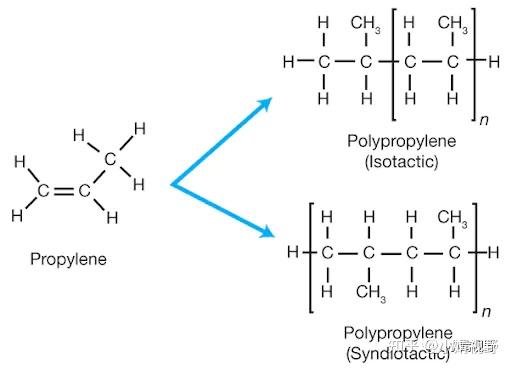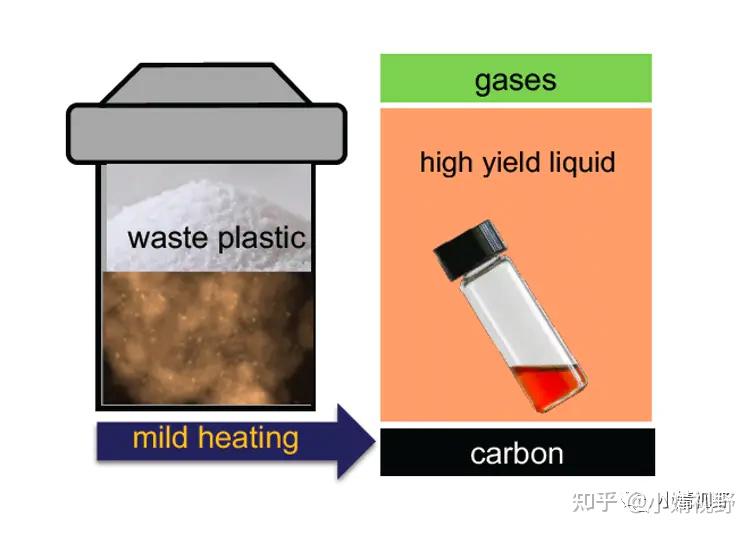作者:SusannahScott翻译:小婧小婧前言:在如今经济发展迅猛的时代,塑料已成为生活中不可缺少的一部分,塑...

作者:Susannah Scott 翻译:小婧
小婧前言:
在如今经济发展迅猛的时代,塑料已成为生活中不可缺少的一部分,塑料给我们带来了不少便利的同时也对环境造成了巨大的污染。
众所周知,我们要回收利用塑料制品,但是回收利用后真的就完事了吗?回收利用的效率真的如我们想象中的高吗?我们能否以另一种富有创造性的方式解决塑料垃圾带来的污染问题呢?下文将会给你对塑料的回收利用带来新的见解!
正文:
如果你认为那些轻薄脆弱的一次性食品塑料袋在塑料垃圾问题中占了绝大多数,那么请您再仔细思考下。全世界每年扔掉的塑料垃圾的量可以重建3700km的中国明朝长城。
If you thought those flimsy disposable plastic grocery bags represented most of our plastic waste problem, think again. The volume of plastic the world throws away every year could rebuild the Ming Dynasty’s Great Wall of China – about 3,700 miles long.


在这60年以来,用于商业用途的塑料就已经生产了超过83亿吨。塑料用途广泛,重量轻,价格低廉,只要不对它进行高温加热,它就几乎坚不可摧。正是这些独特的性能使它们在无菌食品包装,节能运输,纺织品和医疗防护设备的广泛应用中极为有用。但它们坚不可摧的性质是有代价的。大部分塑料在数百年内的时间内在环境中降解的非常缓慢,正因如此造成了如今塑料垃圾在全球泛滥。其对人类和生态系统健康带来的后果尚不完全清楚,但具有潜在的重大意义。
In the six decades that plastic has been manufactured for commercial uses, more than 8.3 billion metric tons have been produced. Plastics are light, versatile, cheap and nearly indestructible (as long as they don’t get too hot). These properties make them incredibly useful in an enormous range of applications that includes sterile food packaging, energy-efficient transportation, textiles and medical protective gear. But their indestructible nature comes at a cost. Most of them decompose extremely slowly in the environment – on the order of several hundred years – where they are creating a global epidemic of plastic trash. Its consequences for human and ecosystem health are still incompletely known, but are potentially momentous.
我(Susannah Scott)是一名在塑料设计制造工艺方面经验丰富的化学家。我开始对将塑料用作大规模的未开发资源感兴趣。我想知道我们是否可以通过将塑料垃圾转变成更有价值的东西以达到其远离垃圾填埋场和自然环境的目的。
I am a chemist with experience in designing processes for making plastics, and I became interested in using plastic as a large, untapped resource for energy and materials. I wondered if we could turn plastic waste into something more valuable to keep it out of landfills and the natural environment.
一种重新使用塑料垃圾的新方法
(A new way to use plastic waste)
塑料是通过以几乎无限多种方式把大量的碳基小分子串在一起形成聚合物链而制成的。
Plastics are made by stringing together a large number of small, carbon-based molecules in an almost infinite variety of ways to create polymer chains.


从单体到聚合物的化学分子示意图
要重新利用这些聚合物,回收措施在原则上可以融化并重塑它们,但塑料的性能往往会有所下降。尽管它们可以被用于制造价值更低的材料像塑料木材等等,但(所重新加工)获得的的塑料材料几乎都不适合其原始用途。(而最终带来的)结果是有效回收的效率非常低。
To reuse these polymers, recycling facilities could, in principle, melt and reshape them, but plastics’ properties tend to deteriorate. The resulting materials are almost never suitable for their original use, although they can be used to make lower-value stuff like plastic lumber. The result is a very low effective rate of recycling.
一种新的方法涉及到把长链(其实就是碳链)再次剪断变成小分子,其挑战之处在于如何以更精确的方式做到这一点(就是把大分子物质转变为小分子物质)。
A new approach involves breaking the long chains down into small molecules again. The challenge is how to do this in a precise way.
由于在最初合成聚合物链时会释放大量的能量。一般地,这意味着将塑料加热到最高温但加热后的塑料材料往往会陷入一团糟。同时这样还浪费大量的能源,意味着会有更多的温室气体排放到大气中。
Since the process of making the chains in the first place releases a lot of energy, reversing it requires adding a large amount of energy back in. Generally this means heating up the material to a high temperature – but heating up plastic causes the stuff to turn into a nasty mess. It also wastes a lot of energy, meaning more greenhouse gas emissions
我在加州大学圣塔芭芭拉分校的团队与来自伊利诺伊大学厄本那-香槟分校和康奈尔分校的同事合作,发现了一种可以将聚乙烯转变成有用的较小分子的干净利落的方法。
My team at UC Santa Barbara, working with colleagues at the University of Illinois Urbana-Champaign and Cornell, discovered a clean way to turn polyethylene into useful smaller molecules.
聚乙烯是世界上最有用且最常用的塑料材料之一,它同时也是塑料垃圾的促成因素之一。全球每年生产将近4亿吨的塑料,它占据了三分之一。其用途从无菌食品包装、防水膜涂料,电缆、电线绝缘外壳,建筑材料、水管到耐磨髋关节和膝盖的替换物,甚至是防弹背心。(可见其用途之广泛)。
Polyethylene is one of the world’s most useful and most used plastic types. It is also one of the largest contributors to plastic waste. It represents a third of the nearly 400 million metric tons of plastic the world makes every year, for purposes ranging from sterile food and medical packaging, waterproof films and coatings, cable and wire insulation, construction materials and water pipes, to wear-resistant hip and knee replacements and even bulletproof vests.
那这项新工程是如何运作的呢?
How the new process works


A simple one-pot process turns polyethylene plastic waste into valuable liquids when it is exposed to a solid chemical catalyst and a little heat.
我们所研发出来的工程(过程)不需要将塑料(聚合物)进行高温处理,而是运用到少量的催化剂——这种催化剂中含有可以从聚合物链中除去氢原子的金属。然后催化剂用除去的氢对与碳链固定在一起的碳键进行切割,从而将一整条长碳链分成一块块小碎片。
The process we have developed does not require high temperatures, but instead depends on tiny amounts of a catalyst containing a metal that removes a little hydrogen from the polymer chain. The catalyst then uses this hydrogen to cut the bonds that hold the carbon chain together, making smaller pieces.
关键点在于氢分子一旦形成就要立即使用,以使链切割为制造更多的氢提供能量。每条链重复多次此过程从而将固体聚合物变成液体。
The key is using the hydrogen as soon as it forms so that the chain-cutting provides the energy for making more hydrogen. This process is repeated many times for each chain, turning the solid polymer into a liquid.
当分子达到一定大小时,切割速度便会自然减慢,因此防止分子变的太小是很容易的。我们能够在将有价值的液体转变为有用的气体之前对其进行回收利用。
The chopping slows down naturally when the molecules reach a certain size, so it’s easy to prevent the molecules from becoming too small. We’re able to recover the valuable liquid before it turns into less useful gases.
这些回收的液体中大多数分子是烷基苯,它们可用作溶剂且很容易就可转变成清洁剂。这类分子(烷基苯)在全球市场上每年约9亿元。
A majority of the molecules in the recovered liquid are alkylbenzenes, which are useful as solvents and can easily be turned into detergents. The global market for this type of molecule is about US$9 billion annually.
将废弃的塑料转变成有价值的分子称为“升级循环(up cycling)”。尽管我们的研究只是一个小规模的示范,但通过初步的经济分析表明,这项工程很容易在接下来的几年中得以适应并进行更大规模的推广。通过以具有良好经济意义的方式重复使用这些塑料,将这些塑料与环境相隔离,是双赢的表现。
Turning waste plastic into valuable molecules is called upcycling. Although our study represented a small-scale demonstration, a preliminary economic analysis suggests that it could easily be adapted to become a much larger-scale process in the next few years. Keeping plastic out of the environment by reusing it in a way that makes good economic sense is a win-win.
个人观点:塑料的使用有利有弊,正所谓“Everything has tow sides.”。如今塑料已离不开我们都生活,而将废弃的塑料转化为高价值的新能源正是对塑料回收利用的创新型转化,创造性发展。
当然,我们不能只依赖于回收利用,在生活中我们也应当减少对塑料制品的使用,减少对塑料制品的依赖性。我们不能在短时间内使得生态环境得以改善,但我们可以阻止其继续恶化。所以,减塑行动,人人有责!
本文章翻译版权归翻译者小婧所有,转载请完整保留作者及翻译者的信息
原文网址:https://theconversation.com/most-plastic-recycling-produces-low-value-materials-but-weve-found-a-way-to-turn-a-common-plastic-into-high-value-molecules-148506










如果认为本文对您有所帮助请赞助本站